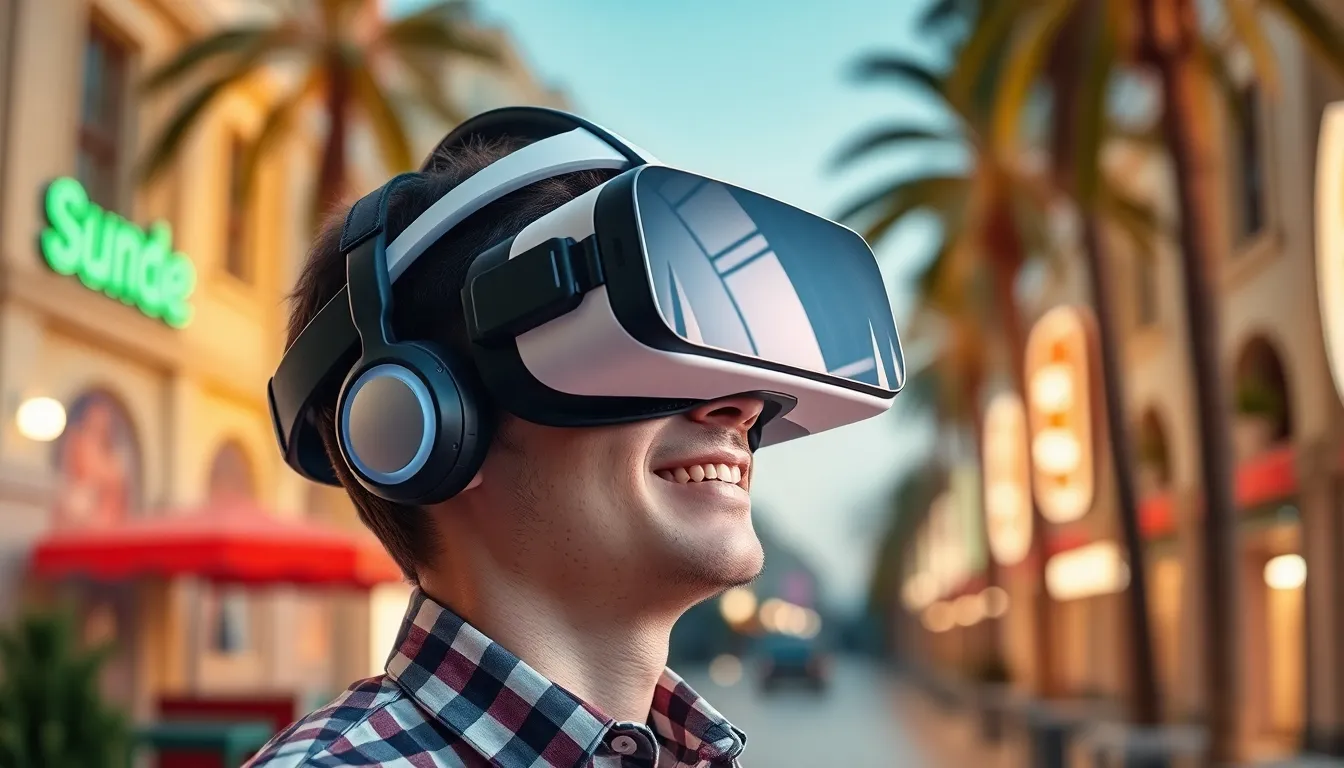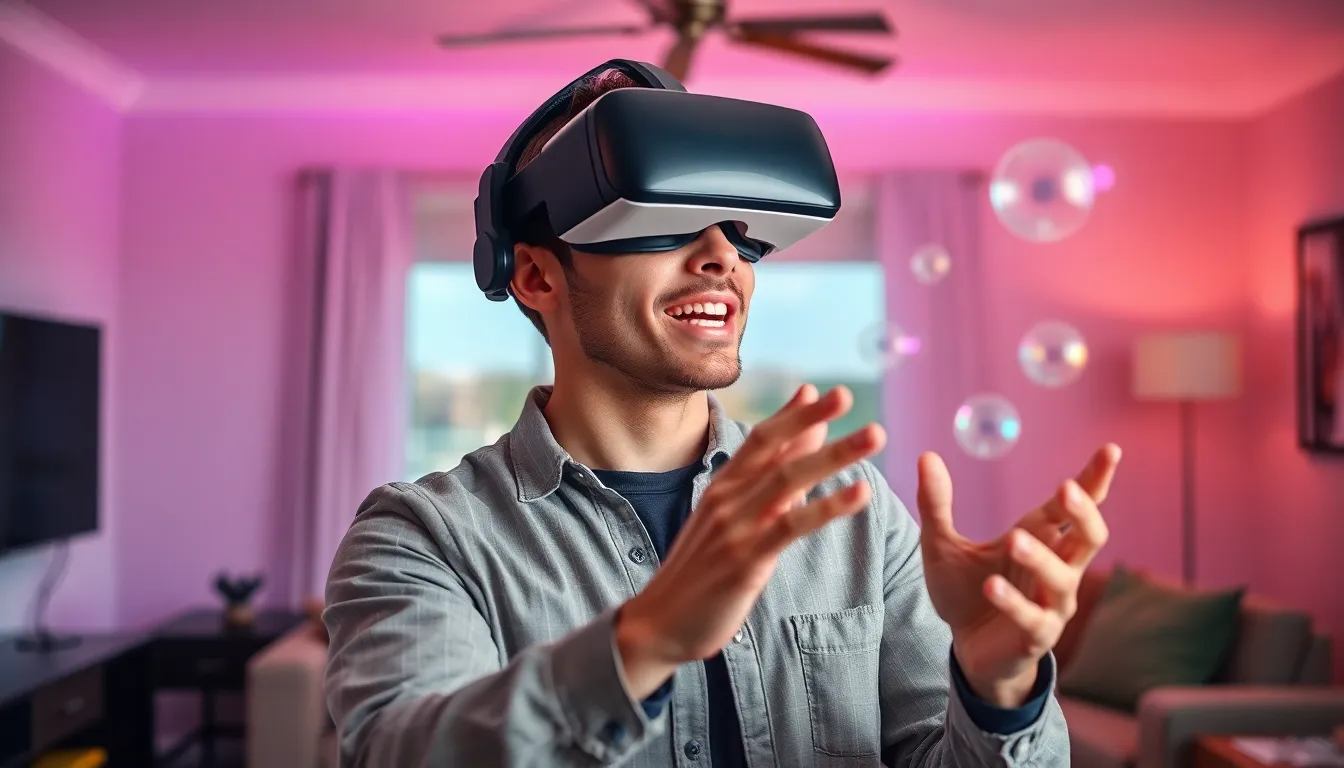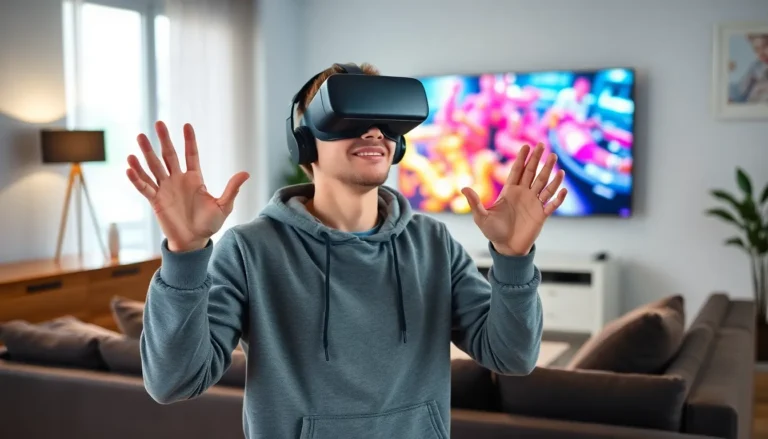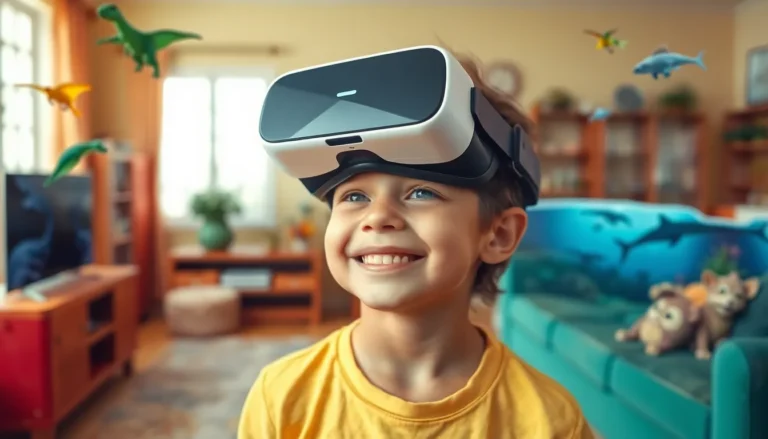Imagine slipping on a headset and being transported to a world where dragons soar, cities float, and you can finally be the superhero you always knew you were. Advanced VR systems are not just the stuff of sci-fi dreams; they’re revolutionizing how we play, learn, and even work. With technology evolving faster than a caffeinated squirrel, these immersive experiences are pushing boundaries and redefining reality.
Table of Contents
ToggleOverview of Advanced VR Systems
Advanced VR systems represent a significant leap in technology that enhances user experiences across multiple domains. These systems employ sophisticated hardware and software to create highly immersive environments. They include headset displays with high resolutions, improved field of view, and motion tracking capabilities. Users experience a new kind of interaction, where their movements translate into the virtual space seamlessly.
Innovations in haptic feedback technology allow users to feel sensations in response to their actions, enhancing realism. Various industries, such as gaming, education, and healthcare, leverage these advancements. In gaming, players engage with environments that respond intelligently to their actions. Educational institutions utilize VR for immersive learning experiences, allowing students to explore complex subjects interactively.
Healthcare practitioners often use VR for training simulations and patient treatment plans. These applications demonstrate the versatility of advanced VR systems in real-world scenarios. Enhanced computing power drives these systems, enabling more complex simulations and wider applications.
Market trends suggest a rapid increase in VR system adoption, fueled by continuous development and decreasing hardware costs. As more companies enter the market, competition accelerates innovations, making advanced VR systems increasingly accessible. Current estimates forecast that the VR market will reach $44.7 billion by 2024, underscoring its growing importance.
Ultimately, advanced VR systems shape how users engage with digital content and their environments. By seamlessly integrating technology into daily activities, they offer transformative experiences that redefine interaction. The ongoing evolution of this technology promises to create even more engaging applications in the future.
Key Features of Advanced VR Systems

Advanced VR systems incorporate several key features that significantly elevate user experiences. These innovations focus on creating a more authentic and interactive environment.
Immersive Visuals
High-resolution displays distinguish advanced VR systems from their predecessors. Users benefit from enhanced clarity, allowing for the rich details of virtual worlds to captivate their attention. A broad field of view provides a panoramic perspective, immersing users deeper into experiences. Motion tracking technology contributes to realism, synchronizing users’ movements with on-screen actions. These combined elements result in a seamless visual experience that makes virtual environments feel extraordinarily lifelike.
Enhanced Audio Experience
3D spatial audio enhances immersion in advanced VR systems. Sounds emanate from various directions, simulating real-life soundscapes for an authentic experience. Directional audio helps users identify location-specific cues, enabling them to react accordingly within the virtual space. High-quality headphones amplify this experience, making even subtle sounds immersive. Together, these audio advancements complement visual elements, creating an all-around engaging virtual reality environment.
Popular Advanced VR Systems on the Market
Several advanced VR systems dominate the current market, showcasing remarkable features and capabilities. These systems elevate user experiences significantly through cutting-edge technology.
System A
Oculus Quest 2 offers a standalone VR experience without the need for a PC. Users enjoy a high-resolution display of 1832 x 1920 pixels per eye, providing stunning visuals. Wireless capabilities create a comfortable experience, enabling freedom of movement. Integrated audio enhances immersion, allowing users to hear sounds from all directions. With an array of games and applications, this system caters to various interests.
System B
Valve Index takes immersive gaming to the next level with its advanced design. Featuring a refresh rate up to 144Hz, it provides smooth visuals and responsive gameplay. This system includes highly accurate controllers, enabling realistic hand movements. Users benefit from a wider field of view, creating a more natural and engaging experience. Compatibility with SteamVR expands access to an extensive library of VR content.
System C
HTC Vive Pro 2 excels in professional environments, delivering exceptional visual fidelity. It boasts a resolution of 2448 x 2448 pixels per eye, perfect for detailed simulations. Comprehensive tracking capabilities ensure precise movement in virtual spaces. The ergonomic design enhances comfort during extended use, making it suitable for training and education. Additionally, its compatibility with various enterprise applications furthers its versatility.
Applications of Advanced VR Systems
Advanced VR systems offer a range of applications across various fields, showcasing their ability to enhance experiences and improve learning outcomes.
Gaming
Gaming stands out as one of the most prominent applications of advanced VR systems. Immersive worlds captivate players, allowing them to explore environments that feel real. Participants control their actions through motion tracking, creating a seamless interaction with the game. Titles such as “Beat Saber” and “Half-Life: Alyx” demonstrate how these systems elevate the gaming experience. High-resolution displays provide stunning visuals that draw players into the narrative. Gamers appreciate the realistic gameplay, enhancing their overall enjoyment and engagement.
Education and Training
Education and training programs benefit significantly from advanced VR systems. Virtual classrooms enable immersive learning experiences, allowing students to interact with digital content in novel ways. Realistic environments facilitate hands-on training, particularly in fields like engineering and science. Simulations help learners develop skills without the risk associated with real-world practice. VR technology also fosters collaboration among students who can engage remotely in shared virtual spaces. Institutions report improved retention rates, showcasing the effectiveness of this innovative approach to education.
Healthcare
Healthcare professionals employ advanced VR systems for training and patient therapy. Medical students use simulations to practice procedures in a risk-free environment, enhancing their skills before working with real patients. Additionally, VR facilitates exposure therapy for individuals with anxiety disorders, allowing them to confront fears in controlled settings. Pain management programs utilize VR to distract patients during procedures, helping to alleviate discomfort. Research indicates that VR applications in healthcare lead to improved outcomes, underscoring its transformative potential in the medical field.
Advanced VR systems are paving the way for a new era of interaction with digital content. Their ability to create immersive experiences is revolutionizing industries from gaming to healthcare. As technology continues to evolve, users can expect even more realistic and engaging environments.
The rapid growth of the VR market reflects a strong demand for these innovative systems. With advancements in hardware and software, the potential for applications is limitless. As these technologies become more accessible, the future holds exciting possibilities for enhanced learning, entertainment, and professional training.
Ultimately, advanced VR systems are not just tools but gateways to new realities, transforming how people engage with the world around them. The journey into virtual landscapes has only just begun, and the impact will be felt for years to come.




